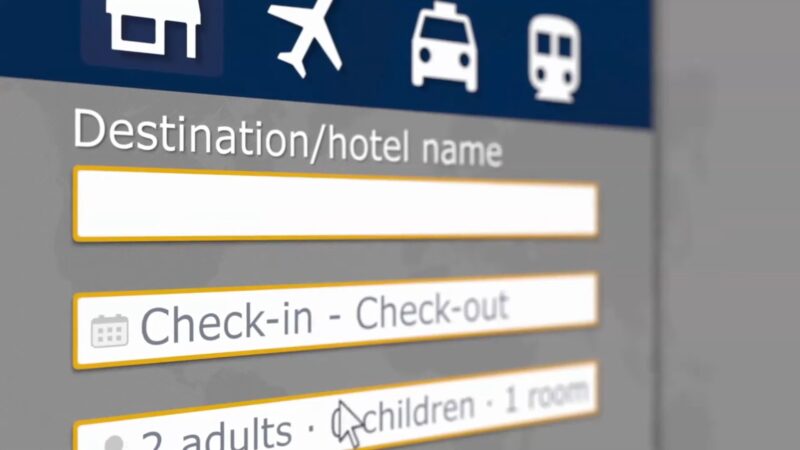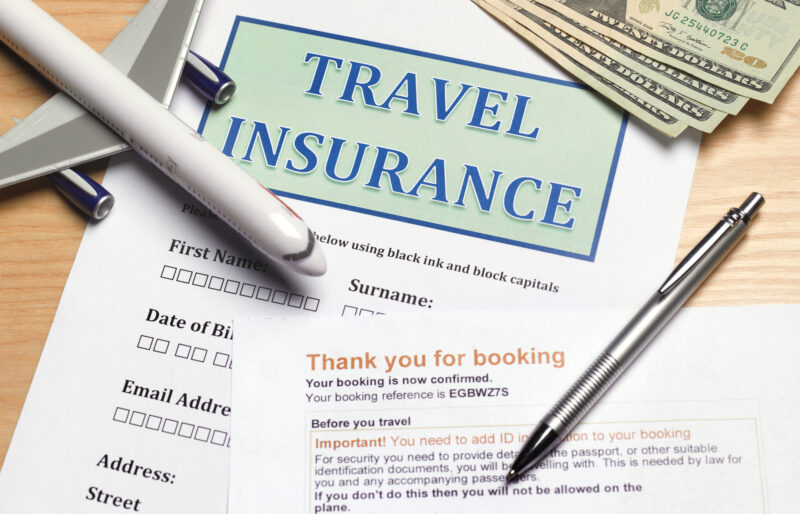Planning a trip can fill you with excitement, yet unpredictability tags along. Think of travel insurance as your safeguard against unforeseen financial losses due to emergencies or changes in your travel plans.
It’s akin to having a backup plan that offers reassurance amidst the uncertainty of travel. With a few simple steps, you can ensure that unexpected events don’t tarnish your travel experiences. Let’s explore how to secure that layer of protection, making your journey as smooth as possible.
Key Takeaways
- The right approach to buy a travel insurance is to start by researching and comparing plans from different insurance companies online.
- Look into each plan’s coverage details, like medical expenses and trip cancellations, to see what fits your trip.
- Choose a policy that matches your needs and complete the purchase on the insurance company’s website.
Steps to Purchase Travel Insurance
Securing travel insurance is a straightforward process that protects you from unforeseen circumstances during your journey. The following steps guide you through selecting a policy that aligns with your requirements.
1. Compare Different Providers and Plans

Start by researching various insurance companies. Each offers a variety of plans, catering to different aspects of travel protection. Comparison websites serve as useful resources, presenting options side by side, allowing you to assess which provider offers the coverage you seek at a competitive price. Focus on companies with positive reviews and reliable customer service.
2. Check Coverage Details and Limits

Dive deep into what each plan covers. Pay attention to specifics like medical expenses, evacuation costs, loss of personal items, and trip cancellation. Coverage limits vary, so confirm the maximum amounts payable under different scenarios. Policies detail exclusions; understanding these prevents surprises during claims.
3. Select a Policy That Suits Your Needs
Your choice should reflect your travel style, destination, and activities planned. For adventurous trips, consider policies covering extreme sports. Families might prioritize higher coverage for lost belongings. If your journey involves multiple destinations, look for comprehensive global coverage. Tailor your selection to your travel particulars.
4. Complete the Purchase Online
Once you decide on a policy, the purchase process is typically online and user-friendly. Fill out the necessary information about your trip and personal details. Payment confirms your policy, and the insurance company emails the documentation shortly after. Review these documents carefully to confirm everything is correct.
Additional Tips
- Buy it on time: You can buy travel insurance at any point before your trip starts, but earlier purchases might offer additional benefits, like coverage for pre-trip cancellation.
- Customize the policy: Some insurers allow you to enhance your policy with add-ons, such as coverage for high-risk activities or additional valuables. Assess these options to ensure your policy fully covers your needs.
- Check out Reviews and Feedback: Consult reviews and feedback from past customers to gauge the insurer’s reliability and service quality, especially in handling claims.
How to Choose the Right Policy?
Choosing the correct travel insurance policy is crucial for safeguarding your journey against unexpected events. This decision can significantly impact your peace of mind and financial well-being during travel. Here are key steps and considerations to help you select a policy that best fits your needs.
Assess Your Travel Needs

Consider the nature of your trip, including destinations, duration, and activities planned. Are you engaging in adventure sports? Are multiple countries on your itinerary? Your travel insurance should reflect these specifics to provide adequate coverage.
Learn About Different Coverage Types
Insurance policies vary in the protection they offer. Key coverage areas include medical expenses, trip cancellation or interruption, lost or delayed baggage, and emergency evacuation. Prioritize these based on your trip’s nature. For example, if you’re traveling to remote areas, emergency evacuation coverage becomes more critical.
Evaluate Coverage Limits and Deductibles
The coverage limit is the maximum amount the insurer will pay for a covered loss. Ensure these limits meet your potential needs. Similarly, a deductible is the amount you pay out of pocket before insurance kicks in. Lower deductibles typically mean higher premiums, but they can offer more financial security in the event of a claim.
Read the Fine Print
Policy exclusions are situations or items not covered by your insurance. Common exclusions include pre-existing medical conditions, extreme sports injuries, or losses under the influence of alcohol or drugs. Understanding these can prevent surprises during the claim process.
Check the Insurer’s Reputation
Research the insurance provider’s track record for customer service and claims processing. Online reviews and ratings can offer insights into other travelers’ experiences.
Consider Policy Extensions
Many insurers offer additional coverage options for an extra fee. These can include protection for high-value items, rental car damage, or allowing for more flexible cancellation reasons. Tailor your policy with these additions if they match your trip profile.
Consult with Experts
If you find the selection process overwhelming, consider seeking advice from insurance brokers or travel advisors. They can offer personalized recommendations based on your specific travel plans.
When is the Best Time to Buy Travel Insurance?
Purchasing travel insurance is a strategic decision that can influence the extent of your coverage. Timing this purchase correctly is key to maximizing your policy’s benefits. Here’s how to determine the most opportune moment to secure your travel insurance.
Immediately After Booking Your Trip

The optimal time to buy travel insurance is shortly after making your initial trip deposit or booking. This timing ensures the widest range of coverage, including for pre-departure events that might cause you to cancel your trip, such as sudden illness or a family emergency.
Advantages of Early Purchase
- Pre-Existing Condition Waiver: Many insurers offer a waiver for pre-existing medical conditions as an incentive for early purchase, typically within 14-21 days of your initial trip deposit.
- Cancel For Any Reason (CFAR) Coverage: If available, CFAR coverage offers flexibility to cancel your trip for reasons not covered under standard cancellation policies. To qualify, you often need to purchase the insurance shortly after your initial trip booking.
Last-Minute Coverage
While early purchase is advisable, some travelers may opt for last-minute insurance. This choice is suitable if your primary concern is coverage for emergencies during the trip rather than trip cancellation.
Limitations of Delayed Purchase
- Reduced Coverage Options: Waiting too long can limit your eligibility for comprehensive benefits like CFAR or coverage for pre-existing conditions.
- Risk of Uncovered Events: If you purchase insurance after an unforeseen event has occurred (e.g., a natural disaster that affects your destination), those specific events will likely not be covered.
Special Circumstances

Certain scenarios might require a different approach to timing your travel insurance purchase.
Multi-Trip Policies
For frequent travelers, an annual multi-trip policy can be more economical. These policies cover all trips taken within a year, making the “best time to buy” at the start of a busy travel period.
Last-Minute Trips
If you’re planning a trip on short notice, purchase travel insurance as soon as possible to ensure you have at least minimal coverage for emergencies during your travel.
Travel Insurance via Credit Cards and Travel Agents
Exploring the avenues through which you can acquire travel insurance reveals that credit cards and travel agents are valuable resources. Each offers unique benefits and considerations.
Credit Card Travel Insurance

Many credit cards come with built-in travel insurance benefits. However, the extent of coverage can vary significantly depending on the card issuer and the specific card you hold.
Credit Card Coverage
- Scope and Limits: Coverage provided by credit cards often focuses on trip cancellation, interruption, and sometimes, emergency medical expenses. It’s crucial to read the fine print to understand the coverage limits and any applicable deductibles.
- Activation Requirements: In most cases, you need to pay for the trip or a significant portion of it with a credit card to activate these benefits. Ensure you know what’s required to utilize the coverage.
- Complementary Nature: Recognize that credit card insurance often supplements other travel insurance policies, filling in gaps rather than serving as your primary source of coverage.
Travel Agent and Tour Operator Insurance

Purchasing insurance through a travel agent or a tour operator provides a streamlined process, but it’s important to weigh the pros and cons.
Convenience vs. Customization
- Ease of Booking: Adding insurance through an agent or operator can simplify your travel preparations, offering a one-stop solution for all your travel needs.
- Limited Options: The downside is that the insurance offered may not be as customizable as buying directly from an insurance provider. Coverage limits and terms may also not match precisely with your requirements.
FAQs
How late can you take travel insurance?
You can usually purchase travel insurance up until the day before your departure. However, buying early can qualify you for more comprehensive coverage options.
Do I need to print my travel insurance?
It is not mandatory to print your travel insurance, but having a hard copy can be useful in areas with limited internet access. Most insurers also provide digital copies that can be accessed on mobile devices.
What is covered under travel insurance?
Travel insurance typically covers trip cancellations, medical emergencies, lost luggage, and sometimes delays. Coverage details vary by policy, so it’s important to read the terms carefully.
Do all Visa cards have travel insurance?
Not all Visa cards offer travel insurance; coverage depends on the card issuer and the specific card level. Check with your Visa card provider to understand your card’s benefits.
What is the most common type of travel insurance?
The most common type of travel insurance is trip cancellation and interruption insurance. This coverage helps reimburse non-refundable travel expenses if your trip is cancelled or cut short due to covered reasons.
Do you pay monthly for travel insurance?
Travel insurance is typically paid as a single premium for each trip rather than monthly. However, some providers offer annual multi-trip policies that can be paid monthly.
Conclusion
Travel insurance acts as your safety net for unexpected events that can affect your trip. It’s important to choose a policy carefully, considering what you need coverage for and how much protection you require.
Whether you buy your insurance online, through a travel agent, or use the benefits provided by your credit card, ensure you understand the coverage details.
The ideal time to purchase is right after you book your trip, to maximize the benefits available. With the right travel insurance in place, you can focus on enjoying your journey, stress-free.
